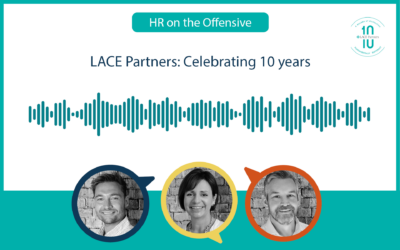As we begin to call time on 2021, HR teams from across the land are already deep in thought about their transformation budgets for 2022. With this in mind, we were recently invited by Unleash to talk about the key challenges and considerations HR teams need to be thinking through as they set their budgets and map out their short, medium and long-term vision for to support their 2022 people strategy. Max Bailey our Technology Advisory Executive Director commented on the article, which you can read here, but we thought we’d also expand on some of the points he made, giving us today’s blog.
The competition for budget across your business
2020 and 2021 may have felt as though they bled into each other in terms of the global pandemic – forcing HR teams to react quickly to Covid demands, the ebb and flow of their businesses and the demands of their people, many of which were dealing with significant impacts in their everyday lives and families – and as we hit the budget and planning cycle for fiscal year 2022 it feels like an opportunity to reset, almost a a fresh start for so many organisations looking to make up for lost time, opportunity and revenue.
HR teams have demonstrated huge value through the pandemic, quickly turning scale problems (like sending large swathes of the workforce home), into longer term productivity gains. Introducing, for example, hybrid working cultures and policies to support what we referred to fondly as “the new normal”. It’s a term which was much overused in 2020 but captures the sense of change we have all been through. For many it has empowered HR teams to do more and to be recognised for their value. So as transformation budgets and plans are being defined for the next fiscal year, there is an intent from HR leaders to further improve technology in areas such as digital employee experience, workforce management, and hybrid working, while supporting restructuring the current office estates to an even “newer normal”. Presenteeism and the office are no longer central to the typical way of working.
As always the availability of the transformation budget will determine which initiatives, not just from HR but from all business functions, are approved and will move forward in 2022. The need for HR to effectively articulate its case for change and business case for budget approval is tougher than ever.
Each business is unique, and depending on the available transformation budget, how the business is performing, and their broader strategic plans and pressures, we are some HR organisations loose out to the ‘Do Nothing’ option. In these cases, companies recognise the need for change, believe that they can make change, but they wonder if they can get through another budgeting cycle without implementing a transformation now. The case for change may be approved in principle, even the budgets may be approved, but for “implementation when we can afford it, perhaps next year”. This leaves HR with political support and implicit approval, but in the longer term. In these cases, HR is often losing out to a lack of transformation budget overall, or to initiatives which are more fundamental to the survival or transformation of the business. Be that through the lens of restructure because of mergers and acquisitions, or the need to transform a core backbone, like the finance or retail backbone of the business. Keep in mind that HR is a support service not a front-office, revenue generating service for the business.
This is the biggest challenge we are seeing for HR transformation initiatives, how their business case competes with arguments to transform the revenue generating parts of the organisation,
Delivering a compelling business case for your budget requirements
Being able to deliver a compelling business case for your HR transformation or new set of people technology, showing a tangible value-add and benefit to the business is the key. As always, HR teams will be competing with other functions for transformation budget, and ultimately it is for the senior leaders of the business to decide which initiatives will deliver the best return-on-investment (ROI). Take the need to execute an improved digital employee experience (EX) across an organisation, for example. It’s not that digital EX isn’t important, it’s just that it may not come first in the competition for funding. The ROI conversation versus the ‘if the process works ok today – even if it can be improved’ is likely to garner a response of ‘do we have to change it now?’. Being able to demonstrate the value of your proposed initiative, and specifically how it will impact productivity and generate revenue, as well as cut HR and HR technology costs, should be your focus when trying to secure transformation funding.
Knowing the market and staying ahead of the game
Being clear of the value of what you are proposing and in your HR tech implementation plans is essential. Having an idea on what others are delivering and how they are delivering it is also an important part of ensuring that your business remains ahead of the curve.
What are the typical types of HR technology we are seeing organisations focus on right now?
Budgets are typically being spent on the Cloud – migrations, transformations, consolidation, etc. Employers are moving to the latest versions of major Cloud products, ideally a single product that works across their landscape. Where they are on multiple platforms the trend for consolidation to improve experience, harmonise processes, and consolidate the data architecture to support improved reporting, analytics, and insights continues.
Service optimisation vs transformation
If you get pushback on your full transformation proposal and budget there is another way forward – the service optimisation programme. Rather than wholesale replacement of your systems, the service optimisation programme, or SOP as it is often affectionally called, seeks to improve service and optimise costs using the current platforms through a mixture of process streamlining and harmonisation, automation, and enablement. Where the full transformation request is pushed back, a less expensive service optimisation programme is often an alternative way forward.
A service optimisation programme tends improve the current operations and systems adoption rather than providing a step change in capability and experience. It provides an avenue to eek out another year or two on the current platform and service model.
Part of a service optimisation programme often includes “skinning” the existing application to try and improve the user experience. There are several vendors – ServiceNow and Salesforce for example – which support this approach as part of a case management initiative, or solutions like Applaud, which specialise the user experience by sitting over existing applications.
A service optimisation programme is also a great way of focusing on improving your data in preparation for a delayed transformation programme. All the new tech in the world won’t fix broken data and processes; this can be a good opportunity to get ready for when the full transformation budget is approved.
The punchline
There is still huge demand for HR transformation – and the request for investment in technology is even bigger than last year – but what we’re seeing is that the cycle time for budget approval is being elongated. We would expect this to continue in to 2022; whilst businesses start to claw back their lost Covid revenues and adjust to the “new new normal”, hybrid work and reconfigured office estates. Many organisations are taking a cautious approach in case of another longer-term lockdown or other market factor, impacts the recovery we are all hoping for. If your full transformation request is delayed, don’t dismiss how much you can achieve with a Service Optimisation Programme in the interim.
If you would like to talk to Max or any of the team about your HR strategy, tech roadmap, or how you can build out your business case for investment during this budget-setting season, reach out to us today and we can offer some initial, impartial, advice.






